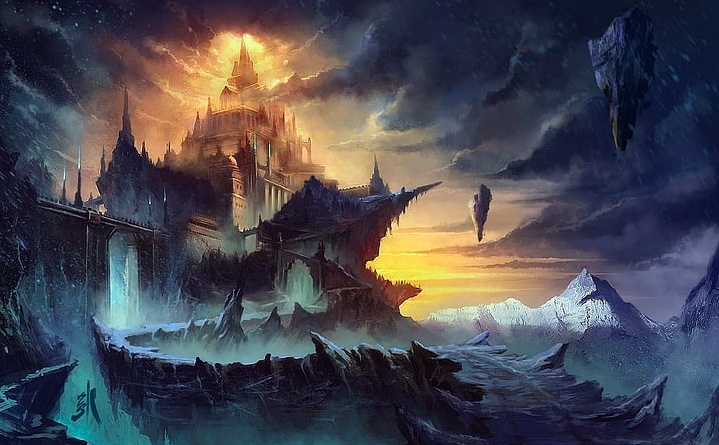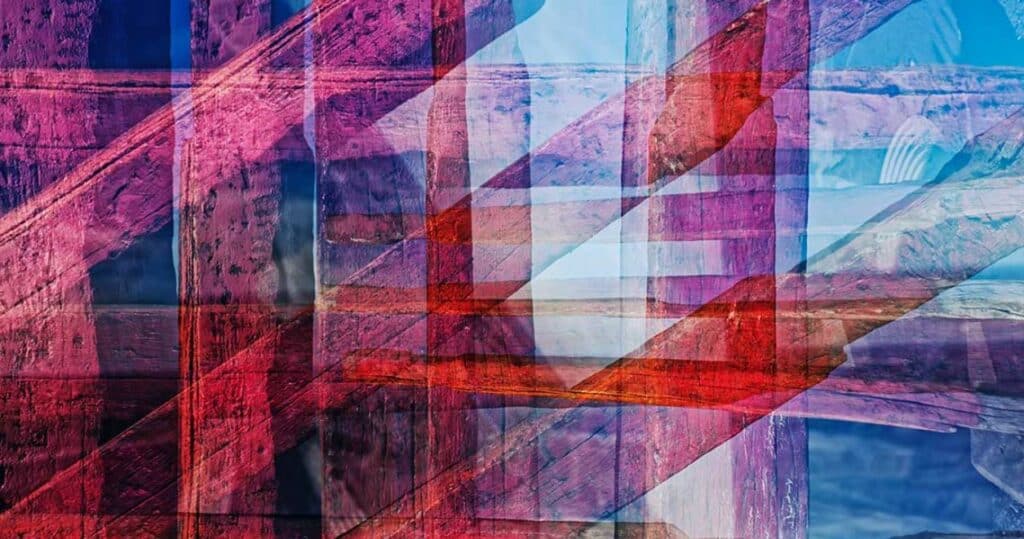“Where art meets technology: The digital revolution.”
The rise of digital art is causing a significant change in the art world, and technology is the driving force behind this change. Artists can push the limits of what is possible in art with the help of technology. This can be seen in digital paintings and virtual reality exhibitions. In this article, we’ll discuss how technology affects the art world and what this means.
The History of Digital Art

Digital art has been around for a long time but has only recently become popular. In the 1960s, artists tried making art with computers, but it was in the 1980s that digital art took off. Artists started to use personal computers and software to create art around this time.
In the 1990s, when the internet became more popular, it helped digital art grow even more. The internet gave artists a new place to show off their work, and digital art became a natural art form. At the beginning of the 2000s, there was more digital art in galleries and museums.
Advantages of Digital Art
Here are some advantages of digital art:
Accessibility
Anyone with an internet connection can make and share digital art with others. Artists no longer need expensive tools or materials to create and share work. It also means digital art can be easily shared and sent to people worldwide.
Flexibility
Digital art is flexible because artists can try out different techniques and materials without risking ruining a physical piece. It also makes editing and making changes easy, which makes it easier for artists to change their work.
Cost-effectiveness
Digital art saves money because it doesn’t need expensive materials like paints, canvases, and brushes. It also eliminates the need for an actual studio, which can be costly to rent or buy.
Sustainability
Digital art is better for the environment than traditional art because it doesn’t create waste or need chemicals that are bad for the environment.
Versatility
Digital art is versatile because it is easily changed and put into different formats, such as prints, animations, and interactive installations. Because of this, artists can use it in many different ways.
Preservation
Digital art is easy to store and keep safe without getting old or broken. This is a better way to keep art around for the next generation.
Interactivity
Digital art lets the viewer interact with and participate, making the experience more immersive and exciting.
Integration with technology
Digital art can be made to work with technology, allowing artists to experiment and push the limits of what is possible in art.
Overall, there are many reasons why digital art is better than traditional art. It is easier to use, cheaper, and more flexible, allowing for more interaction and use of technology. We can expect to see even more creative and exciting digital art in the future as technology keeps getting better.
The Impact of Technology on the Art World
One way that technology changes the way we experience art is through virtual reality. Artists can make immersive exhibitions that let people explore their work in a way that was never before possible with virtual reality. This changes how we view art and gives artists the tools to make more exciting and interactive pieces.
The way we buy and sell art is also being changed by technology. Online art markets like Artsy and Saatchi Art make it easier for collectors to find and buy art. These platforms are making art easier for more people to see and are helping artists find new collectors.
Last but not least, technology is changing how artists make art. Since digital art has become more popular, artists can now use the materials they have to make their art. They can try new styles and techniques and make art that wouldn’t have been possible just a few decades ago.
The Future of Digital Art
We can expect to see more creative digital art in the future as technology keeps getting better. One area where we can expect to see a lot of growth is virtual reality. Virtual dual reality is still a new technology, but it can change how we experience art.
The use of artificial intelligence in art is another area where we can expect to see growth. Some digital art projects are already using AI. As technology keeps improving, we can expect to see even more exciting art made by AI as time passes.
Lastly, we can look forward to how technology and traditional art forms will work together. For example, augmented reality can add interactive parts to conventional paintings. By combining technology and traditional art forms, artists can try new things and push the limits of what is possible.
The Effects of the Rise of Digital Art: The effects of digital art are significant in the art world. One of the most important things it will do is open the art world to more people. Digital art is more accessible than traditional art, so artists worldwide can share their work with people worldwide. This makes the playing field fairer and makes it easier for new artists to get noticed.
The rise of digital art is also changing how we look at art, which is another thing it means. Digital art is making art more immersive and interactive, giving artists new ways to connect with their audiences. This changes how we experience art and gives artists new ways to create works that are more interesting and fun to interact with.
Lastly, the rise of digital art challenges traditional ideas about what art is and what it means to be an artist. With digital art, artists are no longer limited by the materials they use to make their work. This gives artists new ways to experiment and push the limits of what is possible.
Ultimately, the growing popularity of digital art is changing the art world. Technology lets artists push the limits of what’s possible in art, giving them new ways to connect with their audience. The art world is becoming more democratic, which makes art more accessible than ever and helps contemporary artists get known. We can expect to see even more creative and exciting digital art in the future as technology keeps getting better. As digital art becomes more popular, it challenges traditional ideas about what art is and what it means to be an artist. It is also changing the way we look at art.
Q&A
What is digital art?
Digital art is a type of art that is created using digital tools and technology, such as computers, drawing tablets, and software programs.
How is digital art different from traditional art forms?
Digital art differs from traditional art forms, such as painting and sculpture, in that it is created using digital tools and can be easily edited, revised, and manipulated. It is also often more accessible and cost-effective than traditional art forms.
What are the different types of digital art?
The different types of digital art include digital painting, digital photography, 3D modeling, animation, and digital installations.
What tools and software are used in digital art?
The tools and software used in digital art vary depending on the type of art being created. Examples include drawing tablets, digital cameras, and software programs like Photoshop and Illustrator.
Is digital art considered “real” art?
Many in the art world consider digital art a legitimate art form. However, there is an ongoing debate about whether digital art should be viewed as equal to traditional art forms.
How is the rise of digital art impacting the art world?
The rise of digital art is democratizing the art world by making it more accessible and inclusive. It also challenges traditional notions of art and the artist and changes how we view and interact with art.




